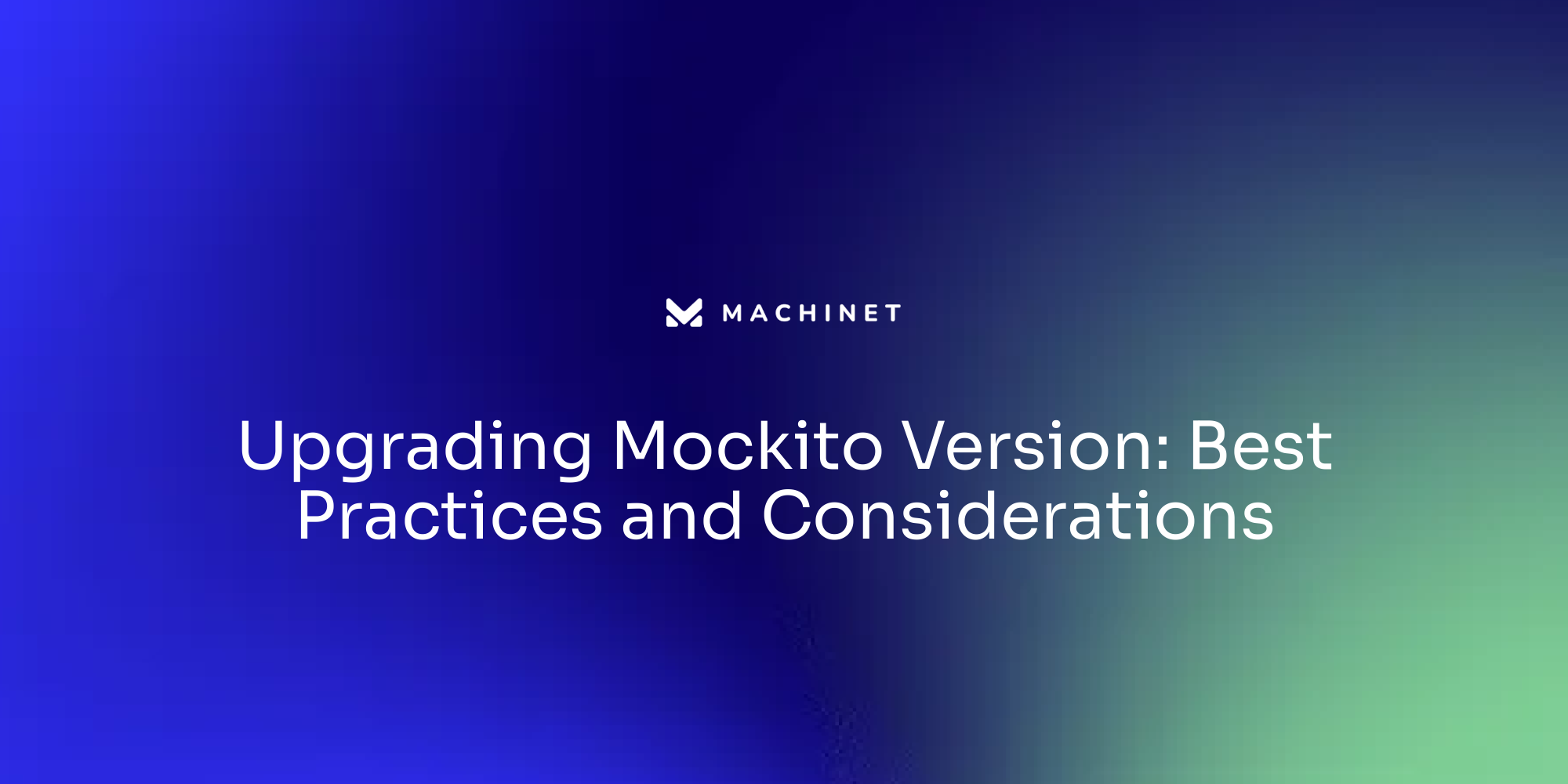
Table of Contents
- Understanding the Syntax of the main Method
- The Role of the main Method in Java Programs
- Command-Line Arguments in the main Method
- Overloading the main Method in Java
- Common Errors and Troubleshooting in the main Method
- Best Practices for Using the main Method in Java Programs
Introduction
Java's main method serves as the gateway for executing a Java program. It adheres to a specific syntax and plays a crucial role in the program's execution.
This article will explore the syntax of the main method, its role in Java programs, handling command-line arguments, overloading the main method, common errors and troubleshooting, and best practices for using the main method in Java programs. Understanding the main method is essential for harnessing the full potential of Java and creating flexible and responsive applications.
Understanding the Syntax of the main Method
Java's main method is the gateway through which the runtime environment invokes your application. It adheres to a strict form:
java
public static void main(String[] args) {
// Your code goes here
}
Let's dissect this signature piece by piece:
- public: Accessible universally, this keyword ensures that the main method can be called from any location. - static: This eliminates the need for instantiating its class, allowing direct invocation.
void: It signifies that the main method concludes without returning any value. -main: The recognized method name, a constant in the world of Java. -String[] args: The parameter that embraces command-line arguments, allowing users to pass inputs to the program.
This structure is a testament to Java's platform independence, a principle that stands out among its many features. Java's mantra, 'Write once, run anywhere,' is embodied in this method, as it ensures your Java code is ready to execute on any device with a Java Virtual Machine (JVM). Understanding the main method's syntax is a stepping stone to harnessing the full potential of Java and its tools, such as CASE tools, that aid in the seamless development and management of software.
The Role of the main Method in Java Programs
The main method in Java is akin to the starting block of a race—it signifies the commencement of execution within a Java program. This method is pivotal as the Java Virtual Machine (JVM) initiates the program's execution by invoking the main method.
One of the powerful features of the main method is its ability to process command-line arguments. These are strings of information that can be passed to the program during its launch from a command line interface.
Within the main method, these command-line arguments are stored in the args array, allowing developers to tailor the program's behavior dynamically based on the input received at runtime. Furthermore, the main method is not just a gateway but also serves as an orchestrator, setting up necessary configurations, initializing resources, and calling upon other methods and classes to fulfill the program's intended operations. As developers navigate through Java's capabilities, understanding and leveraging the main method's functionalities is essential for creating flexible and responsive applications that can interact with their environment and perform complex tasks efficiently.
Command-Line Arguments in the main Method
When you run a Java program from the terminal, you can pass additional inputs known as command-line arguments. These inputs are vital for programs that require dynamic values, without the need for user interaction during execution. The Java platform facilitates the handling of these inputs by delivering them to the main method through an array of strings, conventionally named args.
This array, args, acts as a container for all the arguments that a user enters. For instance, consider a scenario where you wish to print out each argument along with its position in the input sequence. You could craft a simple Java program like this:
java
public static void main(String[] args) {
System.out.println("Number of arguments: " + args.length);
for (int i = 0; i < args.length; i++) {
System.out.println("Argument " + i + ": " + args[i]);
}
}
This program elegantly illustrates how to iterate over each element in the args array using a loop, extracting and displaying the arguments alongside their respective indices.
The property args.length is particularly useful as it indicates the total count of command-line arguments the program has received. Understanding the manipulation of command-line arguments can be essential, especially when you're working with a variety of programming languages and technologies. For Java developers who often interface with languages such as JavaScript, SQL, Python, and HTML/CSS, mastering this concept can enhance the ability to create versatile and dynamic applications that interact smoothly with different technologies and data formats.
Overloading the main Method in Java
Java's main method can be overloaded, which means you can define multiple main methods with different parameters. Despite this, the Java Virtual Machine (JVM) recognizes only the traditional signature public static void main(String[] args) as the starting point of the application.
Overloaded versions are treated as normal methods and can be invoked within the program. For example, consider a class with two main methods: the standard and an overloaded one with two string parameters.
Only the standard main method is called when the program runs, while the overloaded one can be used internally as needed. Overloading methods, including the main method, aligns with the Single Responsibility Principle, ensuring that each method in a program has one distinct purpose. This practice contributes to cleaner, more maintainable code. Additionally, clear comments and documentation are essential, especially when dealing with multiple versions of a method, to guide other developers through the code's logic and structure.
Common Errors and Troubleshooting in the main Method
The main method in Java serves as the gateway for program execution, and it's crucial to adhere to its specific requirements to avoid common errors. Firstly, the signature of the main method must include the public static void modifiers. These keywords are essential; without them, the Java Virtual Machine (JVM) will not acknowledge the method as the starting point for an application.
Secondly, the main method's parameter must be a single string array, conventionally named args. This array carries command line arguments that can be passed to the program. Ensuring the correct spelling and data type is key to proper method recognition.
Lastly, it's important to remember to include the String[] array in the parameter declaration. This array is not just a formality; it's a fundamental component that allows the method to handle command line arguments effectively. When facing issues with the main method, it's advisable to review your code for syntax adherence, keeping in mind the Single Responsibility Principle (SRP) to avoid complexity.
Also, consider adding clear comments to document the purpose and structure of your code, aiding both yourself and others in understanding its function. While the methods we use today are far more complex than the manual calculations of the past, the principles of clarity and precision in programming remain as vital as ever. As we process vast datasets, it's imperative to maintain control over our code's input and structure to ensure its correct execution.
Best Practices for Using the main Method in Java Programs
In the world of Java programming, the main method is your gateway to execution, akin to the starting point of a complex maze. It's crucial that this entryway remains uncluttered, guiding the flow of execution with clarity and precision.
To maintain this, keep the main method focused on initialization and delegation, steering clear of embedding intricate logic directly within it. Instead, utilize methods as your program's building blocks, assigning them clear, singular responsibilities as per the Single Responsibility Principle.
This approach not only simplifies your code but also makes it robust against the perils of complexity. When dealing with command-line arguments, clarity is king.
Opt for variable names that are descriptive and meaningful, painting a clear picture of their purpose. This practice is not just about readability; it's about crafting a codebase that speaks to its reader, explaining its intent without uttering a word.
Moreover, the unpredictable nature of inputs and the environment demands that your code be fortified against exceptions. Encasing your main method's logic within a try-catch block is akin to placing a safety net under a tightrope walker, ensuring that when errors occur, your program responds with grace rather than crashing abruptly. Lastly, remember that your code is a story you tell to your fellow developers. Comments and documentation act as annotations to this narrative, offering insights into the rationale behind each decision. They serve as a guide, illuminating the path through complex algorithms and structures, ensuring that your intentions are understood and your code's legacy preserved. In essence, these practices are your ingredients for a recipe of success, allowing others to replicate your methods and results, contributing to the collective wisdom of the Java community.
Conclusion
The main method in Java is a crucial component for executing programs. It serves as the gateway, adhering to a specific syntax and playing a vital role in program execution. The main method is universally accessible and eliminates the need for instantiation.
It orchestrates the program's operations, sets up configurations, initializes resources, and calls other methods and classes. Additionally, it can process command-line arguments, allowing developers to customize the program's behavior based on user input. Handling command-line arguments is essential for programs that require dynamic values without user interaction.
The args array acts as a container for these inputs, enabling developers to manipulate and utilize them within the program. Overloading the main method allows multiple versions with different parameters. However, only the traditional signature is recognized as the starting point of the application by the JVM.
Overloading aligns with the Single Responsibility Principle and promotes cleaner code. To avoid common errors in the main method, it's important to adhere to its specific requirements. This includes including the public static void modifiers in its signature and ensuring that the parameter is a single string array named args.
Following best practices such as focusing on initialization and delegation, using clear variable names, handling exceptions gracefully with try-catch blocks, and documenting code decisions contribute to creating robust and maintainable Java programs. Understanding the main method's syntax and leveraging its functionalities is essential for harnessing Java's full potential. By following best practices and adhering to specific requirements, developers can create flexible and responsive applications that interact smoothly with their environment while maintaining clarity and precision in their code.
AI agent for developers
Boost your productivity with Mate. Easily connect your project, generate code, and debug smarter - all powered by AI.
Do you want to solve problems like this faster? Download Mate for free now.




